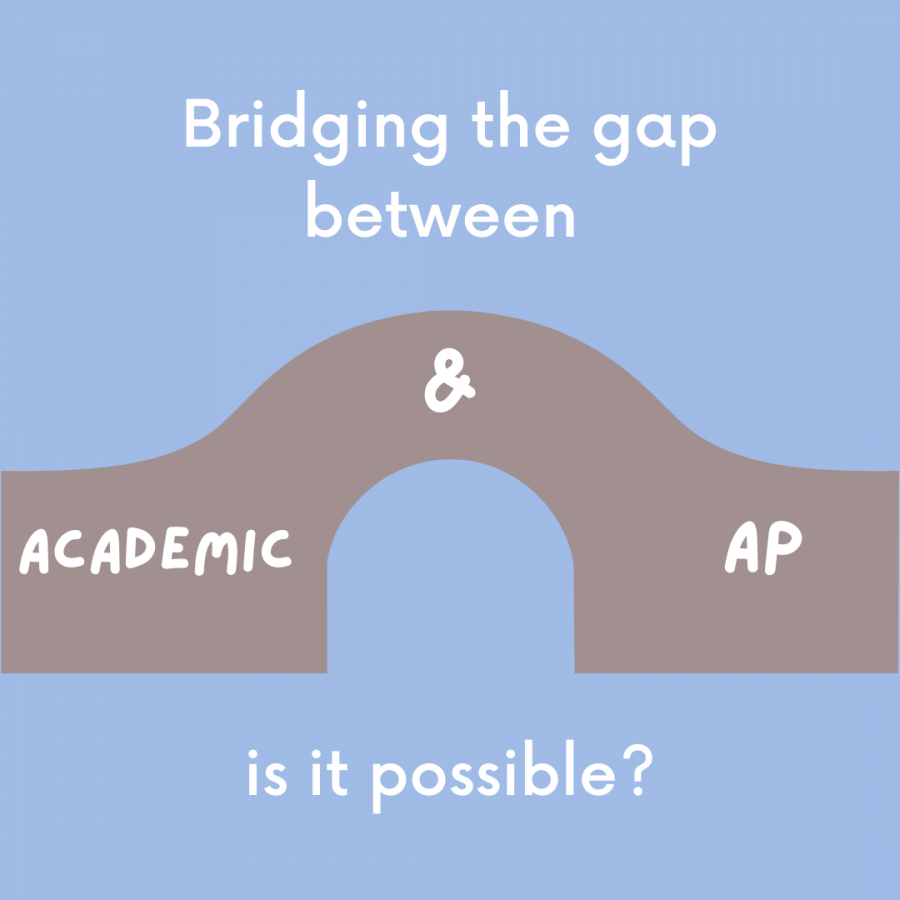Bridging the gap between academic and AP
March 23, 2021
For students at Scotch Plains-Fanwood High School, choosing classes means making a decision: should I take the easiest or hardest level of this subject? For some the choice is easy, but a problem develops for others who fall in the middle. Is it worth it to challenge yourself and risk getting a not-so-great grade in a class above your level? Or get a good grade in a course that’s too easy and doesn’t look great on your transcript? The most obvious answer to this dilemma would be to take a class in between academic and accelerated, perhaps standard or regular level. But is this the perfect solution or just a logistical nightmare?
For math teacher Jeffrey Koegel, who has been teaching at SPFHS for 25 years, having two levels of classes hasn’t always been the case. When he started teaching, there were three levels for most courses: academic, standard and accelerated. Since then, most standard level classes have been removed from the SPFHS program of studies.
“I understand the reasoning [behind the elimination of standard classes], but I would imagine in some courses and departments that it has created a larger gap between accelerated and academic, which puts students in a difficult position,” Koegel said.
As underclassmen become upperclassmen and students have more freedom in their schedule to take classes they want to take, ironically, their choices become more limited. For students taking math classes, by senior year the accelerated level is eliminated completely; most students must choose between taking academic or AP Calculus. Granted there are two levels of AP, (AB and BC) but they are both still college-level courses. Similarly, junior students must choose between taking academic English and AP English Language & Composition, with no accelerated option.
As a result, some students may feel pressured to take AP classes that might not be the right fit and cause unnecessary stress.
“I absolutely think that students are pressured to take AP classes,” Koegel said. “I have had students take five or six AP classes in a school year. That is a lot of work, and then add on top of that the pressure to maintain straight A’s. Then there are students who are struggling in AP classes with low grades and follow the false narrative that it will look bad if they drop an AP class.”
Thankfully, this is not the case for everyone.
“I definitely feel a little pressure to take AP classes because I know they look really good on my college applications, but I have never felt pressured to take an AP just to take it,” senior Jamie Wirth said. “The only APs I’ve taken are ones that I’m really interested in and think I could prosper in.”
While having a third option in between academic and accelerated might be too difficult to impose, a more realistic solution might be having an option between academic and AP, especially for subjects such as Calculus and English where the accelerated option is dropped altogether. And, according to Koegel, the math department briefly considered it years ago. This would allow students to take a class at their level or that challenges them without the pressure that comes with taking a college course.
“I would definitely benefit from having an option between academic and AP classes,” Wirth said. “There are some classes that I would definitely be interested in learning more about and having a rigorous curriculum for, but without having to worry about it being a college level course or feeling like I have to take the AP exam.”
However, this may be easier said than done.
“There are always administrative issues that need to be resolved when adding new courses and/or new levels,” Koegel said. “They need to be staffed by a qualified teacher and there needs to be sufficient interest in the course so that there can be at least one section of it. If you run a small section of a course, that creates a ripple effect where it makes someone else’s class much larger than it should be or you have to have a teacher teach a sixth class, which requires the district to compensate the teacher for teaching an additional class. Some ideas that look good on paper or sound good in theory have numerous roadblocks to implementation.”
Despite the obstacles the school would have to face, having a third level of classes in between academic and AP (specifically English and Math) is definitely worth implementing. It’s not fair for students to have to choose between taking a lower-level high school course and a college level course with nothing in between and frankly, it doesn’t make sense. This year more than ever, schools have had to make drastic changes to adapt to the current circumstances. This can be the perfect opportunity for schools to take a second look at how they are operating and make changes, no matter how big or small.
graphic by Natalia Nervi



